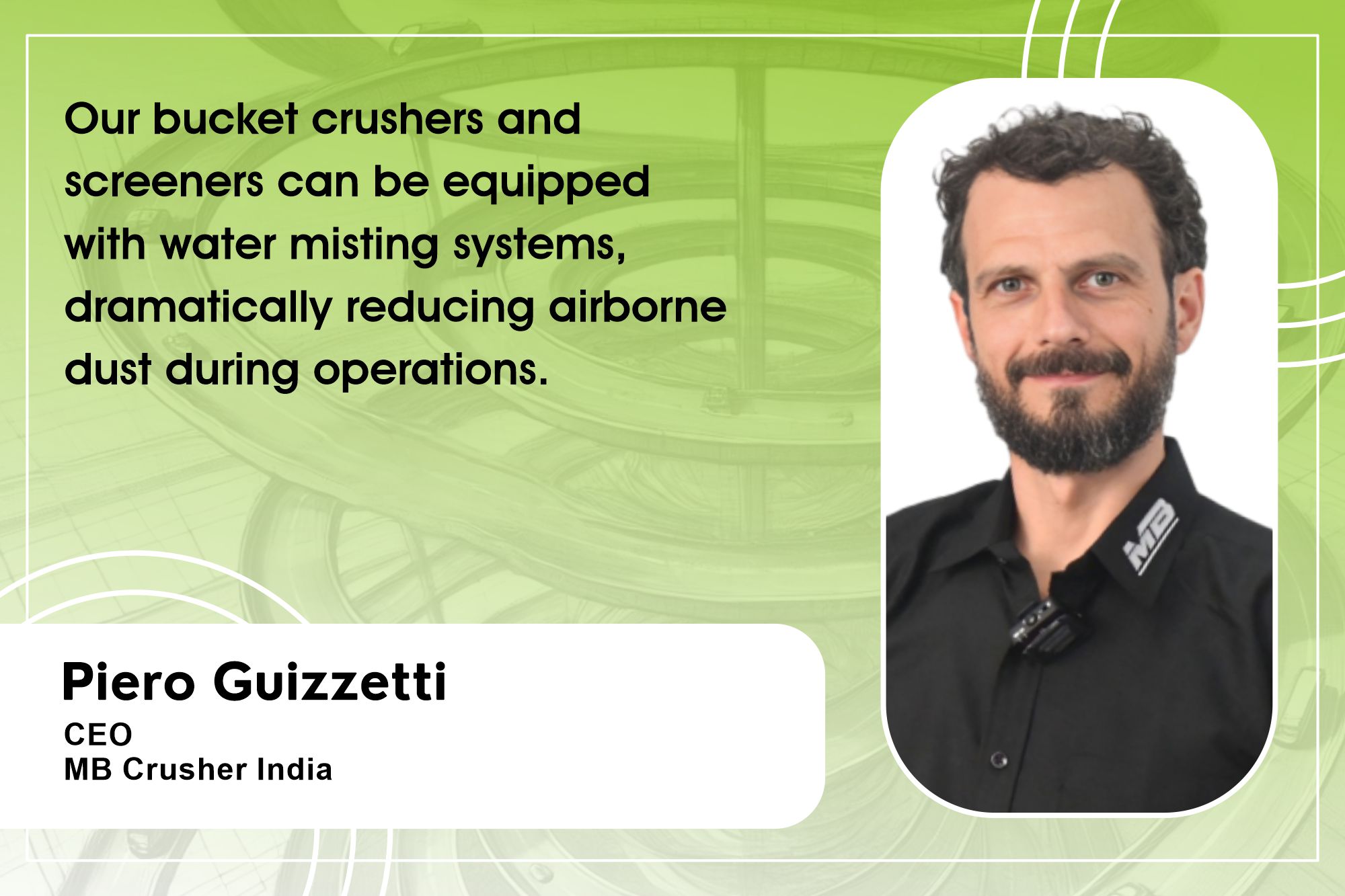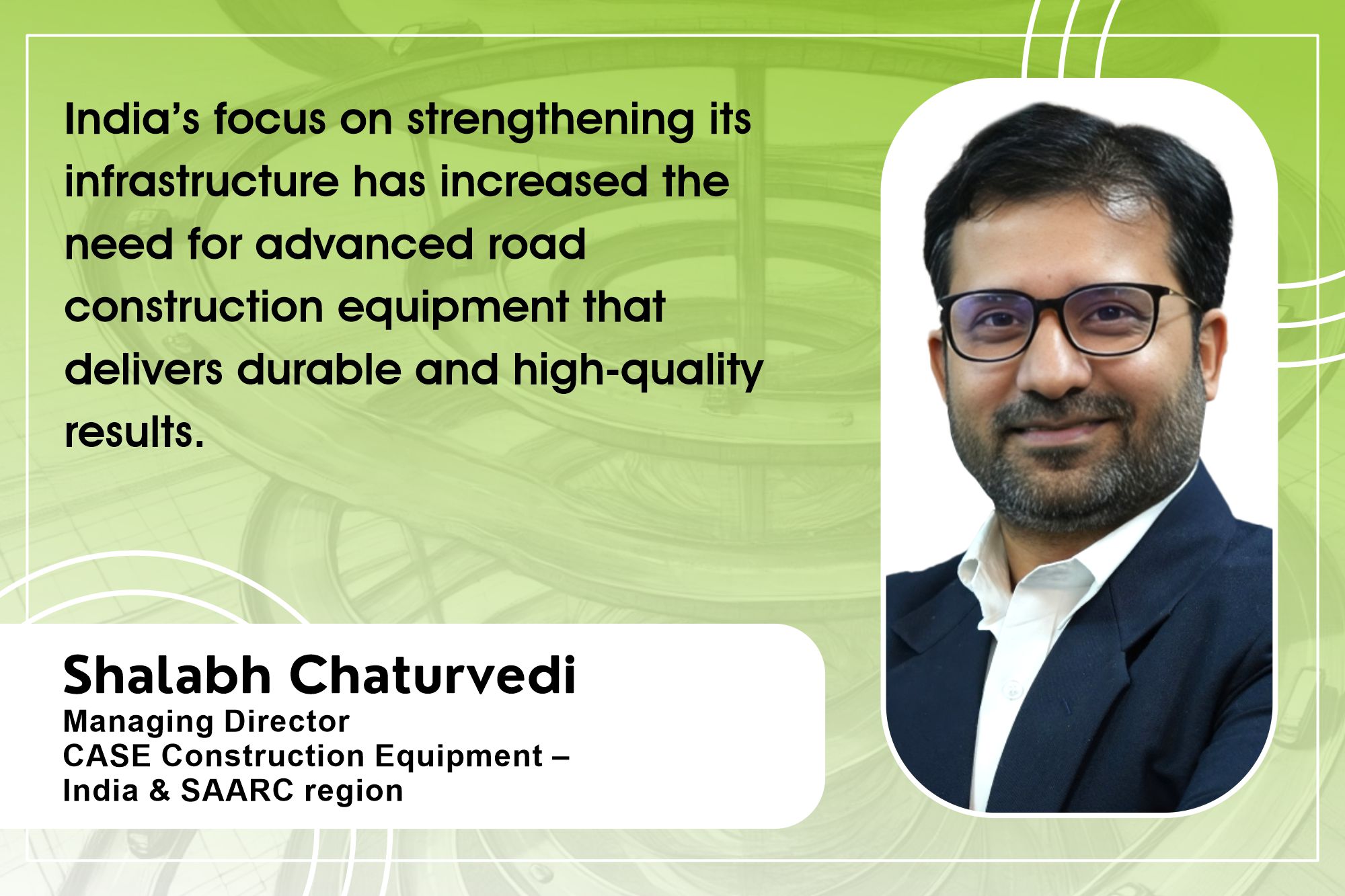India CE Inc exploring the digital edge
By Edit Team | January 9, 2023 2:02 pm SHARE

“IoT-enabled devices have helped us monitor plant operations and other factors for smooth functioning.” Ramesh Babbar, President & Director of Columbia Machine Engineering
“We offer easy customer service for repair or maintenance through our online platform.” V. G. Sakthikumar, Managing Director of SCHWING Stetter India
“Cutting-edge machinery provides excellent productivity and exceptional fuel efficiency for infrastructure development.” Surat Mehta, Head of SDLG Business
“The Make in India initiative focuses sharply on the R&D sector with the best technologies for domestic OEMs.” Dimitrov Krishnan, Managing Director, Volvo CE.
“Digitalisation helps industrial operators reach the next level with advanced technologies.” Manoj Kumar, Managing Director, Armix Machinery.
“The use of AI, ML, and robotics is transforming traditional logistics methods into next-level advancements.” Nikhil Agarwal, President CJ Darcl.
“By 2030, India is anticipated to overtake China as the second-largest player in the CE market.” Debasis Bhattacharya, National Head—Sales & Marketing, AJAX Engineering Pvt.
Over the past two years, exports have grown dramatically. India’s manufacturing exports reached $418 billion in the fiscal year 2022 (FY22), overgrowing over the previous two years. To provide financing to India’s exporters at lower costs, the government has started an interest-equalisation programme.
Evaluating India’s export potential with indigenisation
While discussing the government initiatives, Dr. Piero Guizzetti, CEO, MB Crusher India. says that “the Indian Government’s “Make in India” policy and its focus on that have paid dividends. “It is quite clear that India has made vast progress in the past eight years.” When cost considerations are taken into account, one can also rely on a sizable pool of highly qualified human capital that is very competitive on a global scale, from the infrastructure point of view, to deliver and receive goods to the facilitation at the local level for industrial setups and/or expansion. Two elements are essential for manufacturing activity. The fact that industrial setups may rely on capacity from both domestic and export market demand is the final reason why India’s potential is unquestionable.
“By 2030, India is anticipated to overtake China as the second-largest player in the CE market. By 2030, we may envision ourselves as the second-largest sector because of the Indian government’s ambitious infrastructure development plans, like GATI Shakti and the national bank for financing. Debasis Bhattacharya, National Head – Sales & Marketing, AJAX Engineering Pvt. Ltd., adds that by emphasising indigenisation, businesses can meet domestic needs with specialised and affordable solutions.
Further, Dimitrov Krishnan, Managing Director, Volvo CE India, thanking the government for the ‘Make in India’ initiative, said this created a sharp focus on R&D in the sector and state-of-the-art manufacturing technologies adopted by domestic OEMs. Locally-made construction equipment is already being exported to South Asia and developed markets like the US, UK, and EU. Additionally, the Indian Construction Equipment Industry has made various efforts to produce and obtain equipment locally. More than 50 percent of domestic construction equipment is indigenous, accounting for nearly 90 percent of its volume.
Expansion of infrastructure projects
On focusing on the expansion of projects under Nikhil Agarwal, President CJ Darcl states, “CJ Darcl’s vision is to become a market-leading total logistics solution provider for its clients. The company will need to take a focused approach to nurture its various business verticals. “We plan and prepare the availability of warehouse as per the category of the cargo by using automated storage and retrieval (ASRS), which will enable us to choose the suitable space and condition for the specific cargoes, therefore offering carousel storage and temperature-controlled warehouses as a part of the customer facility.”
Surat Mehta, Head of SDLG Business in India, says that infrastructure construction must be completed swiftly and economically. Therefore, it is crucial to have cutting-edge machinery that offers great production and good fuel efficiency. “Many customers in India’s quarrying, mining, highway, railway siding, and port industries have witnessed SDLG Machines again show their true worth.” They love the SDLG machines’ dependability, productivity, adaptability, and—most importantly—exceptionally low fuel consumption across various applications. “They are your growth engine in every way.”
Digital construction operations
The transition from traditional to digital is visible in all aspects of our lives today. V G Sakthikumar, Managing Director of SCHWING Stetter India, claims, “For years, Schwing Stetter India has been renowned for its cutting-edge machinery and for incorporating big data and IoT into its goods and services. Our induction techniques for advanced technology are well-known in the industry, and our clients continuously look for new additions to our product line each year..”
Regarding digitalisation, Ramesh Babbar, President & Director of Columbia Machine Engineering, expressed, “We have been offering a control system for batch-mixing plants equipped to visualise the process and monitor and store operational data. The next stage is to introduce IoT to the machines, which we are now doing. This will enable our customers to carefully monitor plant operations and verify production, raw material utilisation, waste, and other factors.”
The Indian construction equipment market is estimated to grow at a CAGR of 8.9 per cent by 2028. India is presently the largest market for earthmoving equipment. Owing to its high flexibility and easy operability even in critical surface conditions, it has become one of the most promising segments of construction equipment.
Digitisation is one of the key trends contributing to the revolutionisation of the construction equipment industry. Innovations in state-of-the-art excavators, cranes and bulldozers are being equipped with advanced communication and monitoring tools and applications. The data collected through these systems further analyse the job site performance of fuel consumption and location among the others which further determines the operational cost for efficient fleet management.
Cookie Consent
We use cookies to personalize your experience. By continuing to visit this website you agree to our Terms & Conditions, Privacy Policy and Cookie Policy.




































-20240213125207.png)

























